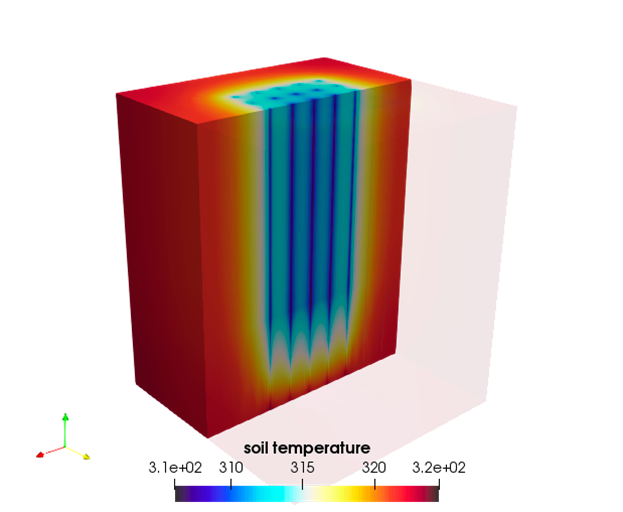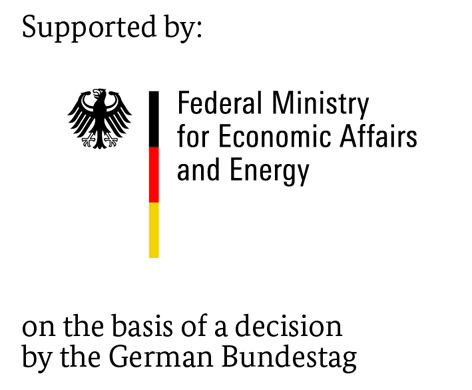ANGUS II
 The horizontal view of a 25-Borehole Heat Exchanger array (Haibing Shao, UFZ)
Project title: Auswirkungen der Nutzung des geologischen Untergrundes als thermischer, elektrischer oder stofflicher Speicher – Integration unterirdischer Speichertechnologien in die Energietransformation am Beispiel des Modellgebietes Schleswig-Holstein – Teilprojekt: Geochemische und thermische Prozesse
The horizontal view of a 25-Borehole Heat Exchanger array (Haibing Shao, UFZ)
Project title: Auswirkungen der Nutzung des geologischen Untergrundes als thermischer, elektrischer oder stofflicher Speicher – Integration unterirdischer Speichertechnologien in die Energietransformation am Beispiel des Modellgebietes Schleswig-Holstein – Teilprojekt: Geochemische und thermische Prozesse
(Project title – English translation: Impacts of the use of the geological subsurface for energy storage in the form of gas and heat – integration of underground storage technologies in the energy transition based on the example of the model region Schleswig-Holstein – subproject: Geochemical and thermal processes)
Short project description:
The joint research project ANGUSII aims at developing methods for the dimensioning and the assessment of induced effects of geotechnical energy storage systems for hydrogen, synthetic methane, compressed air, and heat as well as the integration of the developed methods into concepts for subsurface spatial planning. Aims of the specific research of the UFZ are the simulation and the monitoring of processes in geotechnological systems for substantial or thermal energy storage as a contribution to the evaluation of potentials and safety of these facilities and their environmental impact, in particular, on protected natural resources (e. g., groundwater). Modelling is based on enhanced numerical approaches for the simulation of coupled physical and geochemical processes. An adequate biogeochemical monitoring is necessary, in order to ensure a sustainable operation of geological storage systems, and for the early detection of potential impacts requiring certain action.
The Department of Environmental Informatics will develop numerical methods for the analysis of large-scale geotechnological thermal energy storage systems for heating and cooling purposes. The developed models and algorithms will be implemented into the scientific open source software project OpenGeoSys, which ensures the direct and efficient access for all software developers based on a common software development of several project partners. Thermal-hydraulic-mechanical/chemical coupled models will capture impacts of cyclic processes during construction and operation of the considered systems. Scenario simulations will be focused on the evolution of local stress fields, on studies regarding the evolution of temperature fields, and on the analyses of reactive transport processes. Several measurement methods and monitoring strategies developed by the Department of Isotope Biogeochemistry will be evaluated regarding their applicability for the spatially and temporally adapted monitoring during the operation of shallow geothermal storage systems as well as pore gas storage facilities. The obtained results will be validated in field experiments on a pilot site. Existing guidelines for the utilisation of subsurface resources will be updated and extended based on the project results.
Project duration: 01/17 – 12/20
Funding organisation: BMWi

Project partners:
- Europa-Universität Flensburg
- Johannes Gutenberg University Mainz
- Helmholtz Centre for Environmental Research – UFZ
- Flensburg University of Applied Sciences
- Kiel University Christian Albrechts Universität zu Kiel (CAU) – coordinator
At the UFZ, research for this project is also being conducted at the Department Isotope Biogeochemistry.
At the Department of Environmental Informatics, research for this project is being conducted at the workgroup Geothermal Systems Analysis.
Project website: www.angus2.de
This research was also part of the OpenGeoSys initiative (www.opengeosys.org).
